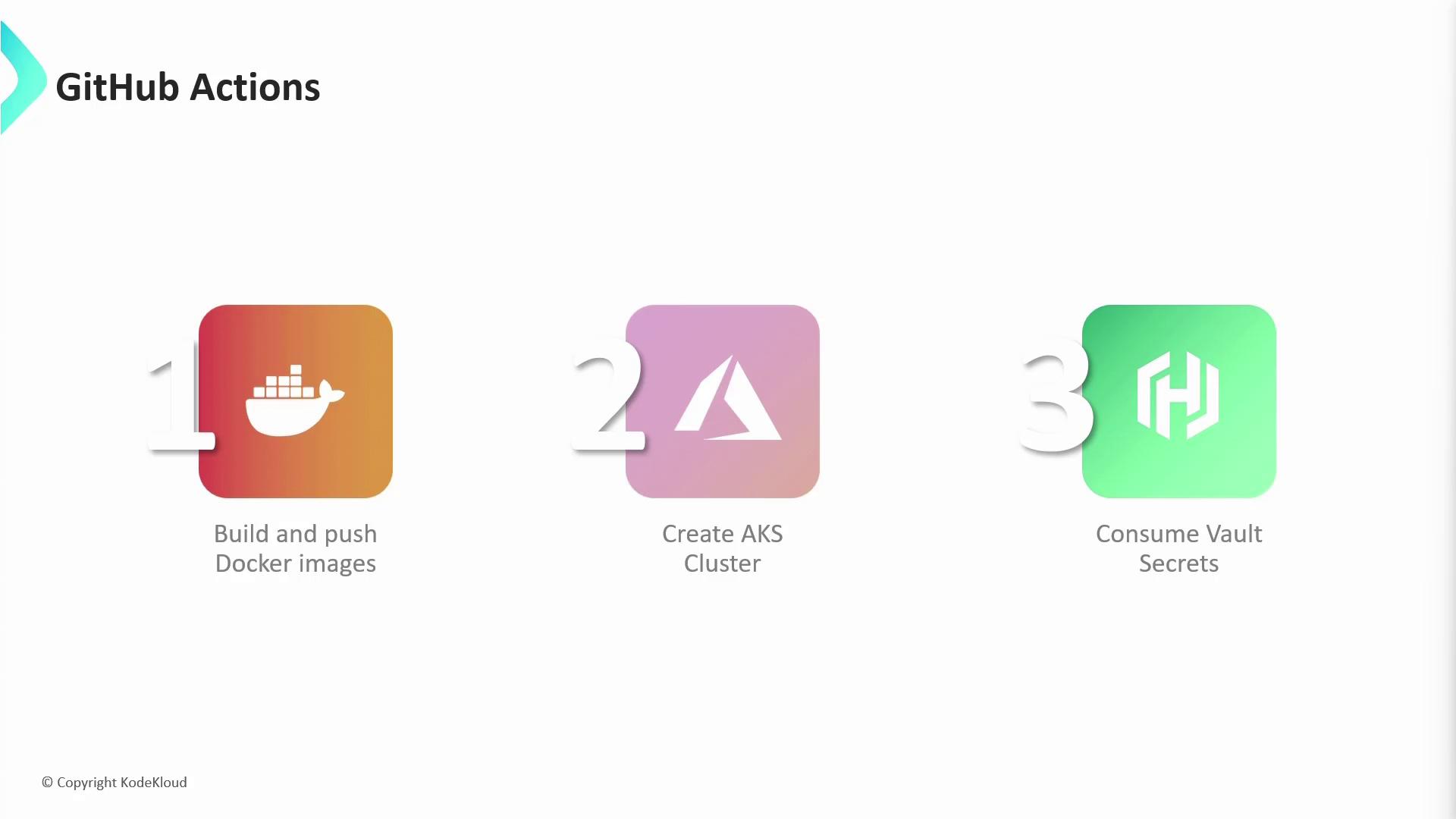GitHub Actions
GitHub Actions Core Concepts
GitHub Action Core Components
Automating your CI/CD pipelines with GitHub Actions starts with understanding its three building blocks: workflows, jobs, and steps. In this guide, we’ll break down each component, show examples, and highlight best practices for scalable, maintainable pipelines.
1. Workflow
A workflow is a YAML-defined automation triggered by repository events (such as push, pull_request, or scheduled events). You store workflows in the .github/workflows directory of your repo.
name: My Awesome App CI
on:
push:
branches: [ main ]
pull_request:
jobs:
unit-testing:
name: Unit Testing
runs-on: ubuntu-latest
steps:
- name: Checkout Repository
uses: actions/checkout@v3
- name: Setup Node.js
uses: actions/setup-node@v3
with:
node-version: 20
- name: Install Dependencies
run: npm ci
- name: Run Tests
run: npm test
Note
Workflows must reside in .github/workflows; files ending with .yml or .yaml will be automatically detected.
Key workflow fields:
| Field | Description |
|---|---|
name | Friendly name displayed in the Actions tab |
on | Defines trigger events (e.g., push, pull_request) |
jobs | A map of jobs to execute sequentially or in parallel |
2. Job
A job is a sequence of steps that run on the same runner. Jobs execute in isolation, so artifacts and environment variables are not shared unless you explicitly pass them.
jobs:
build-and-test:
name: Build & Test
runs-on: ubuntu-latest
steps:
# Steps defined here…
runs-on: Specifies the runner environment (GitHub-hosted or self-hosted).- Jobs can run in parallel by default, or you can enforce a sequence using
needs.
Warning
By default, each job runs in a clean VM/container. Use needs to share artifacts or enforce order.
3. Steps
Steps are individual tasks executed within a job. They run sequentially on the job’s runner and support two main modes:
- Actions (
uses:) – Reusable extensions from GitHub Marketplace or your own. - Commands (
run:) – Inline shell commands.
Example steps:
steps:
- name: Checkout
uses: actions/checkout@v3
- name: Setup Node.js
uses: actions/setup-node@v3
with:
node-version: 20
- name: Install Dependencies
run: npm ci
- name: Run Unit Tests
run: npm test
| Step Type | Description | Example |
|---|---|---|
Action (uses) | Leverage community-built or official actions. | uses: actions/checkout@v3 |
Command (run) | Execute shell commands on the runner. | run: npm test |
Popular Official Actions
You can extend your workflows with first-party or community actions. Here are a few commonly used ones:
- Build and Push Docker Images: Build Docker images and publish to registries.
- Create AKS Cluster: Configure Azure Kubernetes Service context.
- Vault Secrets: Retrieve secrets from HashiCorp Vault.

Component Comparison
| Component | Purpose | Example Usage |
|---|---|---|
| Workflow | Defines event triggers and jobs | .github/workflows/ci.yml |
| Job | Encapsulates steps on a runner | runs-on: ubuntu-latest |
| Step | Executes an action or shell command | uses: actions/setup-node@v3 / run: |
Next Steps
Now that you’ve seen how workflows, jobs, and steps interact, let’s create your first GitHub Actions workflow from scratch:
mkdir -p .github/workflows
cat << 'EOF' > .github/workflows/ci.yml
name: CI Pipeline
on: [push]
jobs:
build:
runs-on: ubuntu-latest
steps:
- uses: actions/checkout@v3
- run: echo "Hello, GitHub Actions!"
EOF
Commit and push to trigger your first automation run.
References
Watch Video
Watch video content